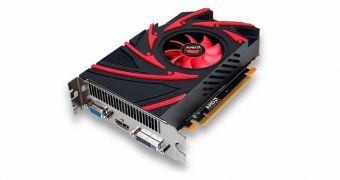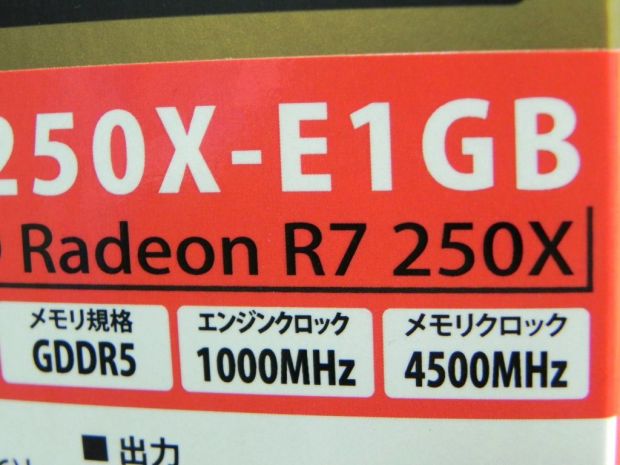The Radeon R7 brand started out as something that would set apart the “weaker” graphics cards in AMD's lineup from the hardcore ones. Mostly, this continues to apply, but the Radeon R7 250XE will stretch the definition.
In many ways, the normal Radeon R7 250X already stretches the definition. Since low-end add-on boards don't get released anymore (due to their offering nothing better than what CPUs' integrated graphics do), AMD and NVIDIA have no choice but to stick to the mainstream and high-end front.
That's why, barring some low-profile cards useful in HTPCs and embedded systems, the weakest add-in video cards from both companies are actually pretty strong.
The Radeon R7 250X itself has a graphics processing unit (Cape Verde XT with 640 stream processors) with 1 GHz frequency, as well as a 128-bit interface controlling 2 GB of GDDR5 VRAM, whose own frequency is of 4.5 GHz.
It's leagues ahead of entry-level specs, which combine weaker GPUs with DDR3 RAM instead of GDDR5 VRAM.
It's not altogether clear what the new video card from Advanced Micro Devices adds on top of all this. The E at the end of the name (Radeon R7 250XE) stands for “Expert,” but it doesn't tell us much on its own.
One possibility is that the TDP (thermal design power) has been lowered, but it's also possible that the video card uses yet another variation of the Cape Verde silicon instead of XT, and maybe some overclocking but keeping the TDP as it is.
We're betting it's the latter, since for mainstream video cards 95W is a pretty decent TDP level to stay at. Especially when high-end ones eat up 275W or so much more (the NVIDIA GeForce GTX Titan Z, for instance, is rated at 375W).
Then again, there have been plenty of cases when OEM-made video cards distinguished themselves from the fold by offering a higher efficiency. So we won't begrudge others the choice to consider this as more probable.
Either way, we won't know until later, possible this Saturday, if the Radeon R7 250XE is released along with the Tonga GPU. The picture you see below was posted by a Japanese website and shows the two single known facts, which we have already mentioned: the GPU and memory clocks.
The direct competitor to Radeon R7 250XE from NVIDIA's camp could be the Maxwell-based GeForce GTX 750/750 Ti if AMD chose power over efficiency in this case.

 14 DAY TRIAL //
14 DAY TRIAL // 

